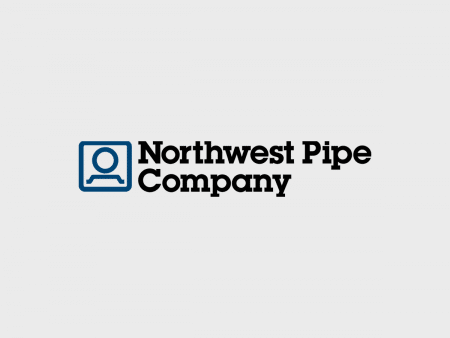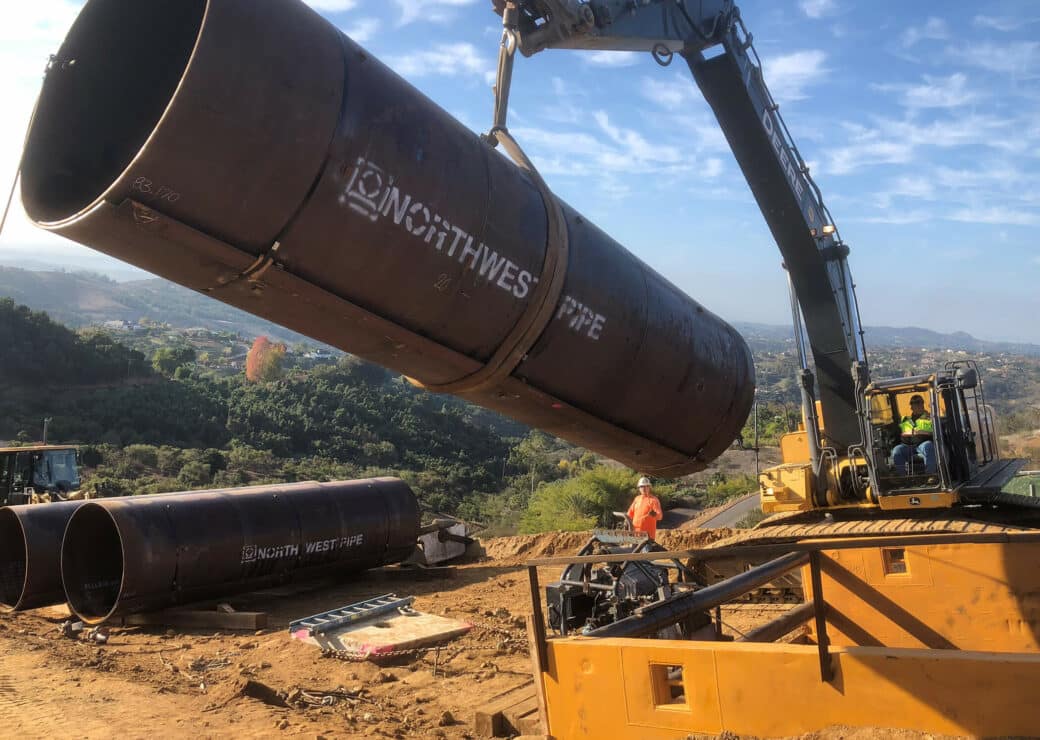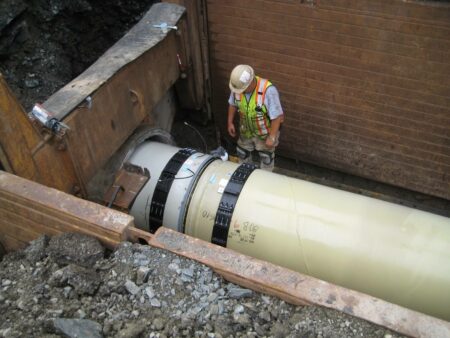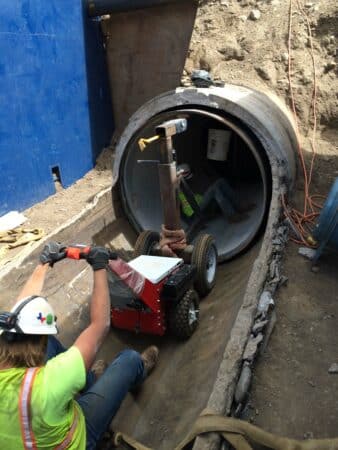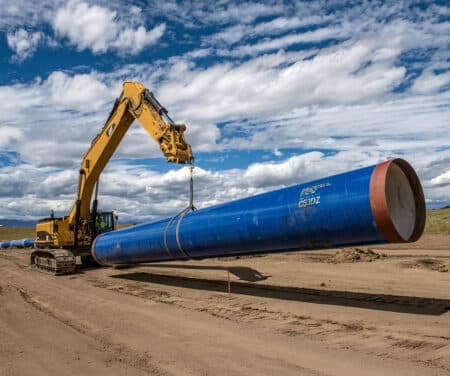Rehabilitation
Rehabilitation of water or wastewater pipe offers a cost-effective alternative to full pipeline replacement.
With many large-diameter water transmission pipelines reaching the end of their intended service lives or needing repair, municipal agencies throughout North America are embracing steel cylinder-based rehabilitation solutions.
Rehabilitation of water or wastewater pipelines offer an alternative solution to replacement of structurally deficient pipelines by traditional cut, remove, and replace methods. Trenchless rehabilitation with steel cylinders results in a fully-structural carrier pipe manufactured to the specifications of the host pipe with equal pressure or ‘upgraded’ for higher pressures and flow rates. Even with the small loss in internal diameter, the benefits of trenchless rehabilitation construction, especially in busy urban areas, are of high value. Without rehabilitation, water municipalities face the larger risk of transmission line failure, which can have a catastrophic impact to a community.
Northwest Pipe supports municipalities grappling with water or wastewater pipeline concerns or failures. We manufacture steel rehabilitation systems for concrete pressure or iron pipe systems and offer two independent rehabilitation solutions: Sliplining and Relining. Both provide long-term (100+ year) internal burst strength, when tested independently from the host pipe, and deliver equal to or greater than the maximum allowable operating pressure of the host pipe. In other words, rehabilitation results in a ‘brand new’ steel pipeline installed in a less evasive trenchless application.
Sliplining
Sliplining consists of inserting complete sections of steel cylinder into the host pipe, connecting the adjoining slipliner cylinder sections by either internal lap welding or using gasket joints, then typically filling the annular space between the host pipe and the slipliner sections with a lightweight cementious grout. For internal corrosion protection, lining may be shop-applied or field-applied for larger diameters. Although cylinder design, fabrication, and installation are less specialized in comparison to relining, sliplining has a higher loss of internal diameter area of 6 to 8 inches in a 60-inch host pipe.
Relining
Relining involves inserting collapsed steel cylinders into the host pipe. We roll the cylinders with the longitudinal seam left unwelded and add steel tension straps that reduced the pipe diameter for ease of insertion. Once in place, the straps are released allowing the cylinder to expand to fit precisely inside the host line. Install teams complete the connected cylinders with longitudinal and circumferential field welds. Install teams utilize grout ports fabricated on the reliner sections to fill the annular space between the liner and host pipe with a lightweight cellular grout. Finally, cement mortar lining is field-applied to the inside of the reliner sections for corrosion protection. The minimal pipe size for the host pipe is typically 54-inch or larger to allow worker entry. Relining results in minimal internal diameter loss in the host pipe, usually 2 to 3 inches.
Pipeline rehabilitation is a proven method to modernize aging water and wastewater systems. In addition to bringing reliability and economic prosperity to communities, efficient water delivery systems support broader environmental benefits including habitat enhancement and sustainability.
Rehabilitation Projects
View All